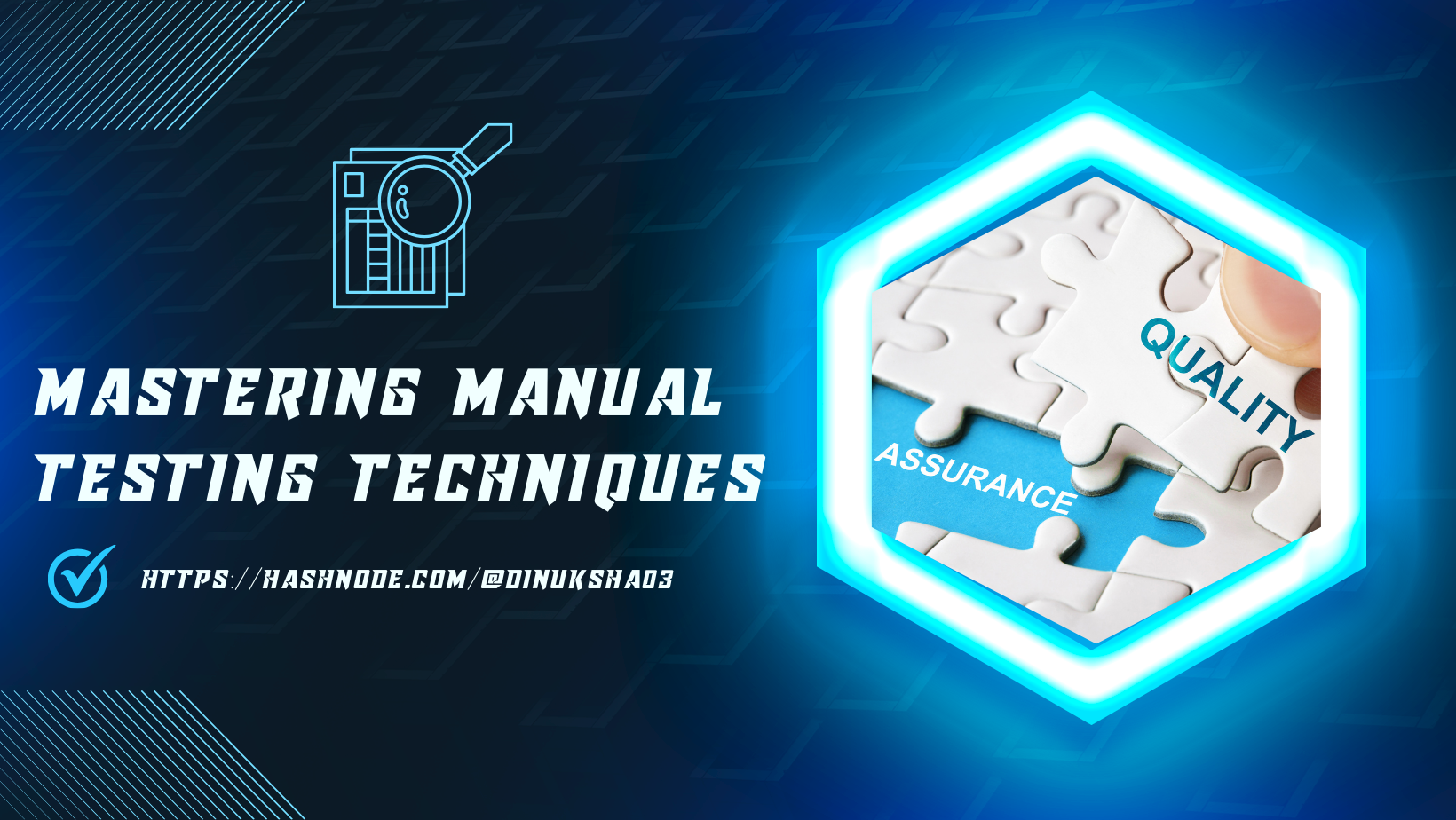Mastering Manual Testing Techniques
 Dinuksha D 亗
Dinuksha D 亗
🚀 Mastering Manual Testing Techniques: Strategies for Success 🚀
In the realm of software development, manual testing remains an essential component of ensuring product quality. While automation has gained prominence, mastering manual testing techniques is key to delivering high-quality software products. In this article, we'll explore some strategies for success in manual testing.
1. Understand the Requirements: Before diving into testing, it's crucial to have a clear understanding of the software requirements. Familiarize yourself with the user stories, acceptance criteria, and any relevant documentation. This ensures that your testing efforts are aligned with the intended functionality of the software. 📋
2. Prioritize Test Cases: Not all test cases are created equal. Prioritize your test cases based on factors such as criticality, risk, and frequency of use. Focus on testing critical functionalities first, followed by less critical features. This helps in maximizing test coverage while optimizing testing efforts. ⚡
3. Create Comprehensive Test Plans: Develop comprehensive test plans that outline the scope, objectives, and approach for testing. Include details such as test scenarios, test data, and expected results. A well-defined test plan serves as a roadmap for your testing activities and ensures thorough coverage of the software under test. 📝
4. Leverage Exploratory Testing: Exploratory testing is a powerful technique for uncovering unexpected defects and usability issues. Instead of following predefined test scripts, explore the software dynamically, trying different inputs and scenarios. This approach allows for creative and intuitive testing, complementing scripted testing efforts. 🌐
5. Document Defects Effectively: Accurate defect documentation is essential for effective communication and resolution. Clearly describe each defect, including steps to reproduce, expected behavior, and actual results. Attach screenshots or videos, if necessary, to provide additional context. This helps developers understand and address the issues efficiently. 📌
6. Collaborate with Stakeholders: Effective communication and collaboration with stakeholders are vital for successful manual testing. Engage with developers, product managers, and other team members to clarify requirements, discuss test results, and prioritize defects. Collaborative testing efforts facilitate a shared understanding of quality goals and drive continuous improvement. 🤝
7. Continuous Learning and Improvement: Stay updated with the latest industry trends, tools, and best practices in manual testing. Invest time in continuous learning through online courses, workshops, and community forums. Experiment with new testing techniques and methodologies to enhance your skills and stay ahead in the field. 📚
Conclusion: Mastering manual testing techniques requires a combination of technical skills, domain knowledge, and critical thinking. By understanding requirements, prioritizing test cases, creating comprehensive test plans, leveraging exploratory testing, documenting defects effectively, collaborating with stakeholders, and embracing continuous learning, testers can achieve success in manual testing and contribute to delivering high-quality software products.
As manual QA engineers, let's embrace these strategies for success and elevate our manual testing skills to new heights. 💪
Finally:
☘️** Amidst the digital realm's ever-changing scene,
Manual testing reigns as the quality queen.
With techniques refined and insights bright,
We master the art, guiding software's flight **☘️
Subscribe to my newsletter
Read articles from Dinuksha D 亗 directly inside your inbox. Subscribe to the newsletter, and don't miss out.
Written by

Dinuksha D 亗
Dinuksha D 亗
Hi there! 👋 I'm Dinuksha, a passionate QA Engineer at SPM Private Limited in Batticaloa, where I ensure top-notch quality in software development. Beyond my QA role, I also lend my expertise remotely as a diligent Data Entry Coordinator for Space Group, an Australian company. When I'm not immersed in the world of technology, you'll often find me exploring the rich tapestry of Tamil Literature, where each poet's verse has the power to transport me to another realm. Inspired by the beauty of language, I've ventured into writing myself, recently joining Hashnode to share my insights and reflections. Join me on my journey as I navigate the intersections of technology and literature, embracing the power of words to inspire and transform.